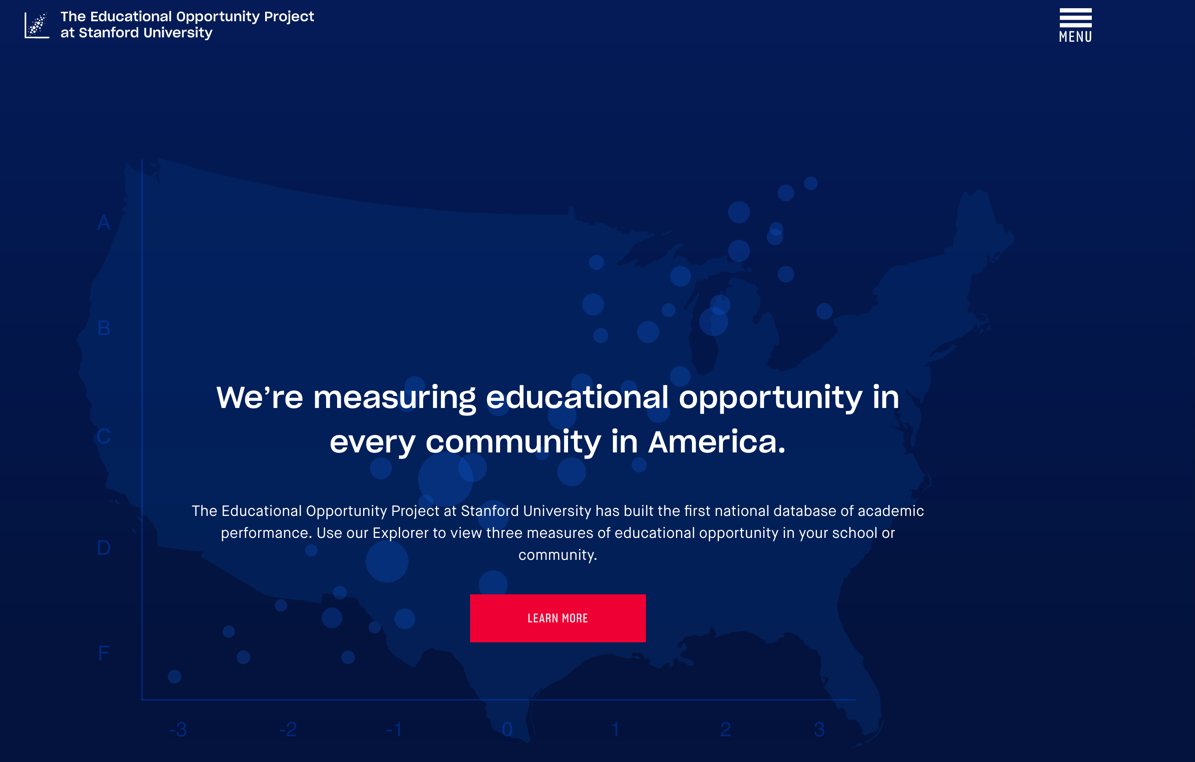Research Tools: First National Database of Academic Performance Launches
From the Harvard University Graduate School of Education:
A new interactive data tool from the Educational Opportunity Project at Stanford University will provide extraordinary access to information about academic performance across schools and districts throughout the United States.
The project is directed by Stanford Professor Sean Reardon, Ed.M.’92, Ed.D.’97. The development team that created the new tool includes HGSE Professor Andrew Ho as a principal researcher, along with Erin Fahle of St. John’s University School of Education and Benjamin Shear of the University of Colorado Boulder.
Tests Scores as Measures of Opportunity
The Educational Opportunity Project gives journalists, educators, policymakers, and parents a way to explore and compare data from the Stanford Education Data Archive (SEDA), the first comprehensive national database of academic performance.
The database, first made available online in 2016 in a format designed mainly for researchers, is built from 350 million reading and math test scores from third to eighth grade students during 2008–2016 in every public school in the nation. It also includes district-level measures of racial and socioeconomic composition, segregation patterns, and other educational conditions.
Researchers have used the massive data set over the past few years to study variations in educational opportunity by race, gender, and socioeconomic conditions throughout the United States. The data have also shown that students’ early test scores do not predict academic growth over time, and that poverty (or childhood advantage) does not determine the effectiveness of a school.
Now, with the new interactive tool, members of the public can generate charts, maps and downloadable PDFs to illustrate and compare data from individual schools, districts, or counties.
Learn More, Read the Complete Article
More From Stanford University:
The site provides detailed data on three measures of educational opportunity:
- Average test scores, which reflect all of the educational opportunities children have from birth through middle school
- Learning rates (how much students learn from one year to the next), which reflect the opportunities available in their schools
- Trends in how much average test scores change each year, which reflect changes in the opportunities available to successive cohorts of children
Read the Complete Article
Direct to Interactive Data Tool
Filed under: Data Files, Maps, News
About Gary Price
Gary Price (gprice@gmail.com) is a librarian, writer, consultant, and frequent conference speaker based in the Washington D.C. metro area. He earned his MLIS degree from Wayne State University in Detroit. Price has won several awards including the SLA Innovations in Technology Award and Alumnus of the Year from the Wayne St. University Library and Information Science Program. From 2006-2009 he was Director of Online Information Services at Ask.com.



